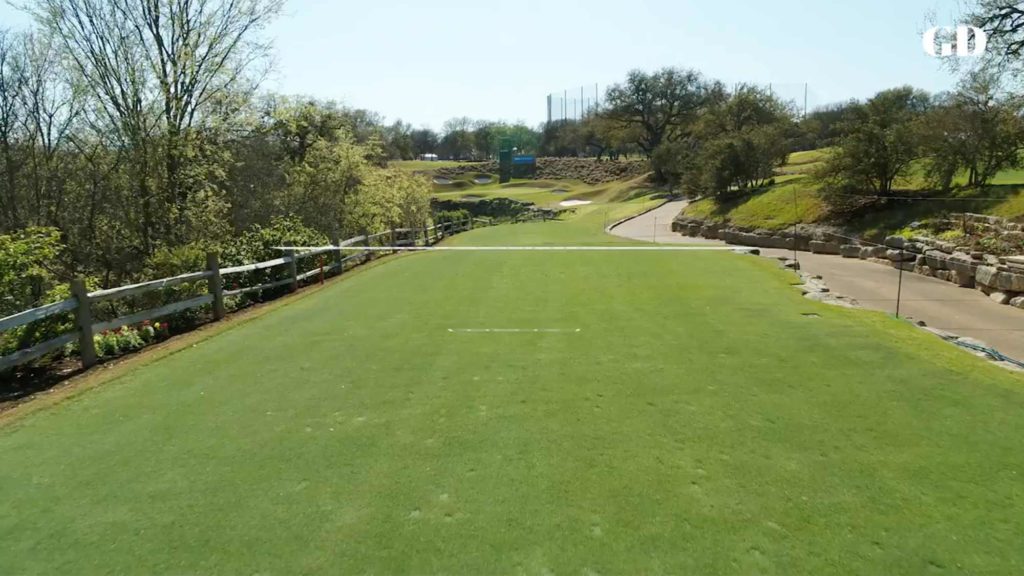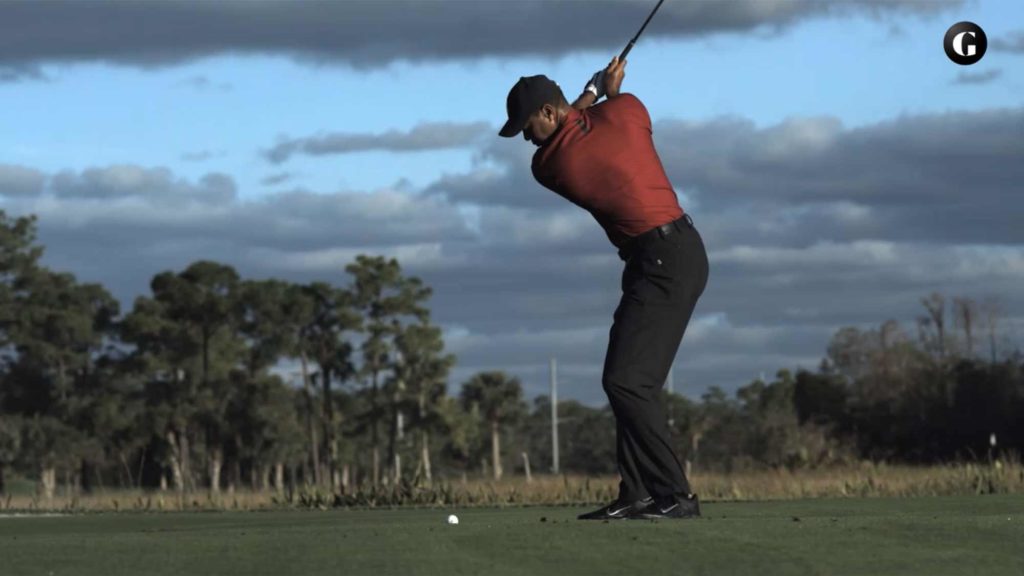There have been countless lists published ranking the greatest holes in golf. Invariably these lists, depending on the theme, will include selections from a well-established canon: the 17th at St Andrews in Scotland, the sixth at Seminole, the 16th at Cypress Point, and so on. A list of the PGA Tour’s greatest holes would likely identify the eighth – or 18th, or ninth, or 10th – at Pebble Beach, the 17th at TPC Sawgrass, Riviera’s short par-4 10th and others that everyone is familiar with.
Looking to get beyond these standard and often redundant rankings of “greatest” holes, we began wondering: what are some of the most underrated holes on the PGA Tour? Which holes deserve more attention than they get?
That question cannot be answered until we resolve the somewhat thorny issue of what underrated means. Does underrated mean the most secretly difficult holes on tour? No, that’s merely a statistical category measuring the scoring component, with too little nuance. How about holes rarely seen on television? Getting closer, but there still needs to be some compelling playability factor for a hole to be intriguing.
Eventually it became clear that the best, most underrated golf holes are those capable of unsettling the world’s greatest players while existing mostly out of the public eye. They are holes that are not merely challenging but represent moments in the round with the maddening capacity to produce a range of outcomes. They must be approached cerebrally and resist thoughtless assault. They present riddles that are not easily answered, stirred by changes in the winds. There should be some ineffable quality that makes them unknowable or unconquerable, daunting or dictating. They are holes that are bewitching and beguiling, and being beautiful doesn’t hurt.
These are the attributes of our “underrated” list: holes that dangerously tempt fate with the notion of birdie or even eagle, holes that are monoliths that dare the player to take on a task beyond which he or she might be capable, or a small morsel yielding only to precision and nerve.
We consciously favoured holes that are unsung and unfamiliar – meaning holes that are not commonly discussed or broadcast, or that are overshadowed by others on the course. We were particularly interested in deep-dive data points that revealed something unique about how particular holes presented themselves on tour (a special thanks to Luis Rivera and Morgan Johnson from the PGA Tour for their help with this story). Although we admire the dynamism and excitement of the driveable par 4 (and could have included at least twice as many as we did), we were just as eager to explore the mysteries of much longer and shorter holes.
For the sake of tradition, the list contains 18 holes, but we have not tried to construct an actual 18-hole course from them, although it’s possible. The only criterion is that the holes had to have featured during a tournament on the PGA Tour’s 2020-2021 schedule, beginning with the Safeway Open in September 2020. The courses needed to be an annual tour stop and not a one-time host course or Major-championship venue (Augusta National is in, for example, and Winged Foot and Liberty National are out). We prioritised how the holes have played during the past five years and required that each have a minimum of two years of tournament play to analyse. Otherwise we went where our hearts and our heads – and sometimes our guts – led us. Here’s to bewilderment.

Hole 4: Pebble Beach Golf Links
AT&T Pebble Beach Pro-Am
Par 4 • 331 yards / 303 metres
A round at Pebble Beach is all about getting to the cliffside giants from six through 10, and the impending return to the ocean at 17 and 18. The anticipation of one of golf’s most fabled runs is what makes the sudden emergence of Stillwater Cove as you walk down the fourth hole so special: it’s almost unexpected. For such a short hole the fourth is surprisingly complex with a perfectly placed, left-of-centre bunker 215 metres off the tee effectively emasculating a 45-metre-wide fairway. Every pro has the ability to clear the obstacle, but waiting beyond is a strand of bunkers hedging in from the left, pinching the landing area and pushing drives towards the cove. The choice, presented on a fascinating sliding scale of risk, is to take on the narrowing gap for a pitch-shot approach or lay back and hit a full wedge to the tiny, 215-square-metre green surrounded by sand.
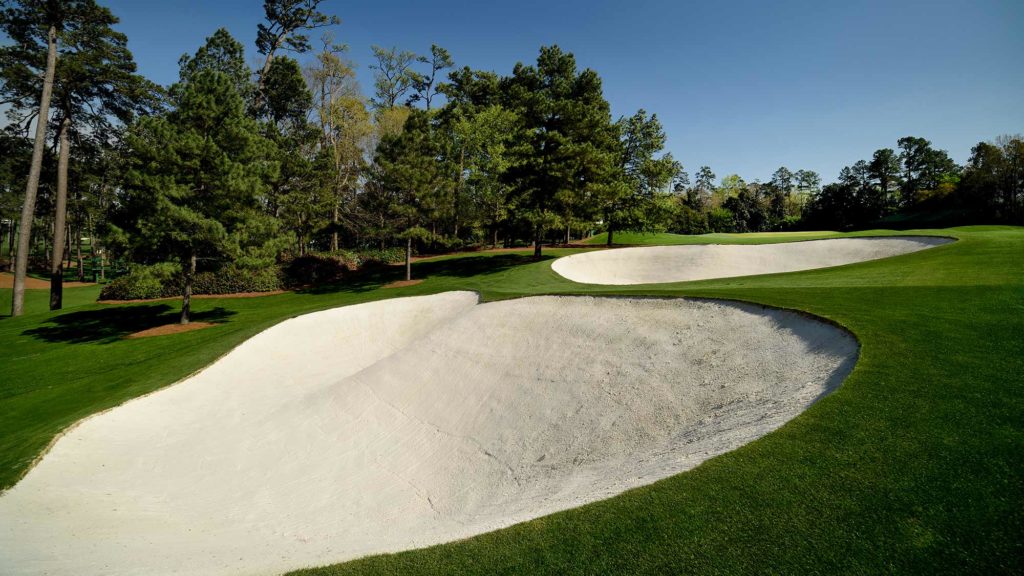
Hole 5: August National Golf Club
The Masters
Par 4 • 495 yards / 453 metres
It’s a stretch to suggest that any hole at Augusta National might be underrated. But TV doesn’t come close to depicting the mesmerising contours of the formidable fifth green. Yes, the hole is long, especially with the tees now extended an additional 40 metres. (It was originally intended to be the sternest par 4 on the course, inspired by the Road Hole at St Andrews, and from 2019 to 2021, with the new length, it is again.) But the real challenge begins around the putting surface where the bulbous rolls and troughs reroute incoming shots and produce long, bending putts. Not surprisingly, the fifth is the third-most three-putted green on tour the past five years (Augusta National’s 16th was the second-most). Interestingly, the fifth has ranked as the most one-putted six times since 2010, suggesting the best way to get the ball close to the hole is with a chip.
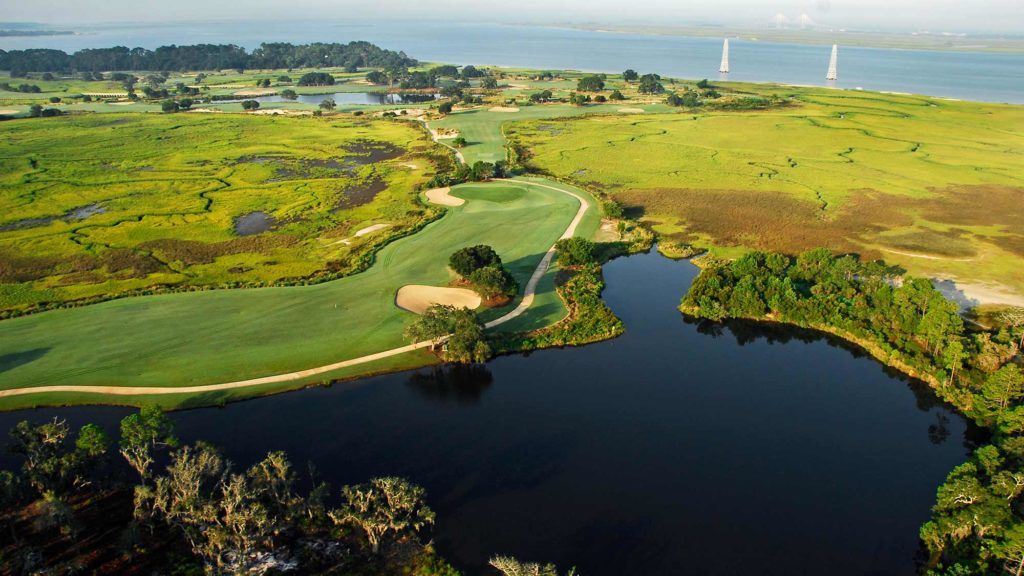
Hole 4: Sea Island GV (Seaside COURSE), St Simons Island, Georgia
RSM Classic
Par 4 • 429 yards / 392 metres
he fourth comes early in the round, but the panoramic views of the surrounding marshes and long looks across St Simons Sound preview the better-known, historic holes that come later. Tom Fazio created the fourth out of two older holes (a short par 4 and a par 3, originally built in 1970) during a complete overhaul of Seaside in 1998. It’s now a strong dogleg left with the marsh in play on both sides and one of the most heavily contoured greens on the course. The hole typically generates an equitable number of 3s and 5s (218 to 232 during the past five seasons), and though the fairway is generous by tour standards, errant tee shots, exacerbated by sea winds, have resulted in more than 100 penalty strokes since 2017.

Hole 11: PGA West (TPC Stadium Course), La Quinta, California
The American Express
Par 5 • 591 yards / 540 metres
Pete Dye’s mandate when building the Stadium course at PGA West in the early 1980s was to make it one of the most punishing courses in the world. Though the design is riddled with deep bunkers, water hazards and crater-like swales, the most vexing hole has almost none of that. The 11th is a dead-straight par 5 with a grass spectator embankment along the right and a low-rough area down the left. An ornamental rock pond flanks the green’s left side, but it doesn’t summon golf balls the way many treacherous holes on tour do. Since 2016, only 10 players have hit the deep, elevated putting surface in two shots during the tournament, largely because of the enormous, deflecting mounds in the last 100 metres of fairway. The hole still plays slightly under par, but it manages to thwart direct attack.

Hole 14: Quail Hollow Club, Charlotte
Wells Fargo Championship
Par 4 • 344 yards / 315 metres
These days a “driveable” par 4 on tour usually needs to be well over 300 metres for the longest players to actually pull a driver instead of a fairway wood. The 14th at Quail Hollow is one of the tour’s best examples because it’s just lengthy enough to make pros wonder if they can get home – and whether it’s worth it (about 60 percent of the field usually decides that it is). The hole tilts right to left towards the lake that it bends around, with the water running tight against the green embankment. Hitting driver is extremely risky, but even lay-ups are challenging because approach shots from the fairway – and they must be on the fairway – have to hit towards the lake and slightly across the axis of the deep, shallow green, with almost no one attempting to take on tight rear pins. Players make birdies or eagles 50 percent of the time, but the 14th makes them sweat doing it.

Hole 18: TPC San Antonio (AT&T Oaks course), Texas
Valero Texas Open
Par 5 • 591 yards / 540 metres
TPC San Antonio’s 18th is a variation of the highly original par-5 11th at TPC Sawgrass in which players are faced with a tempting decision to hit second shots across water to a plateau green, lay up for a short pitch-shot third, or cross the hazard to a second fairway on the left, leaving a straight angle into the green. Here a sunken, boulder-strewn wash splits the primary and secondary fairways and cuts close to the front of the green, offering no bailout short. The degree of difficulty is extreme, and the choice of going for the green becomes existential because it’s the last hole of the day, and sometimes the tournament. Since 2015 only 319 out of more than 2,200 players have felt bold enough to take on the shot, making this an unsatisfactory scoring hole for the pros – and one of the tour’s rare par 5s that usually plays close to par.
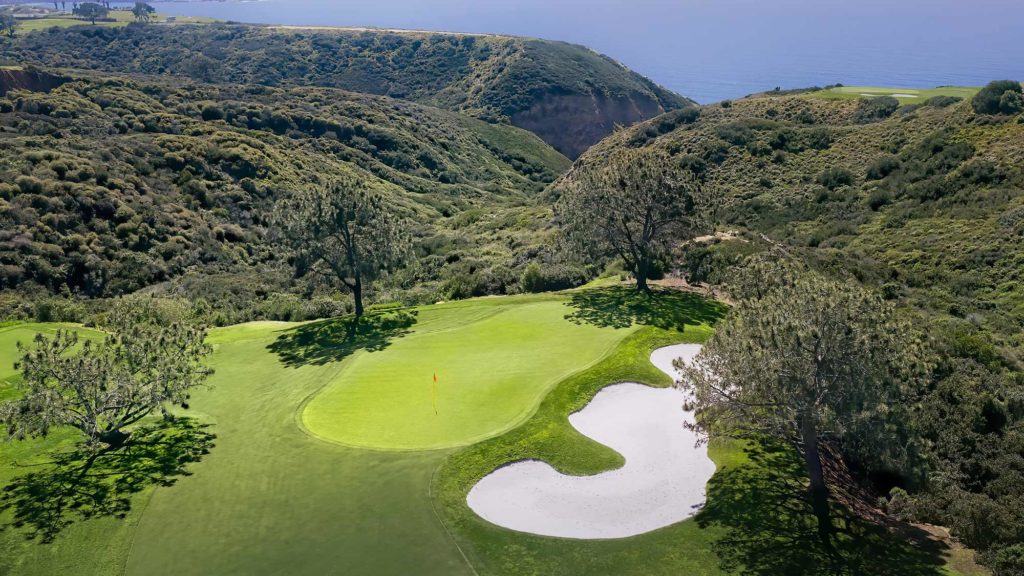
Hole 7: Torrey Pines Golf Course (South Course), La Jolla, California
Farmers Insurance Open, 2021 US Open
Par 4 • 462 Yards / 422 metres
Torrey Pines South is not generally considered a second-shot golf course – putting the ball in the fairway is the primary objective. The dogleg-right seventh hole, however, is all about the second shot. Yes, drives have to be slotted into the 27 metres between bunkers left and the heavy, stroke-multiplying rough on the right, but the approach must be played to a slightly uphill, skyline green, which is angled over a deep front bunker and slides into hollows behind and on the left. During the past five years just 56 percent of the players at the Farmers Insurance Open have secured the green in regulation, and those that miss get up and down less than half the time. But it’s a good place to sound off after making bogey because it’s one of the most isolated points on the course, set on a gorgeous spit of land surrounded on three sides by the canyons of Torrey Pines State Reserve and the Pacific Ocean twinkling beyond.

Hole 9: Silverado Resort (North Course), Napa, California
Safeway Open (Fortinent Ch’ship)
Par 5 • 557 yards / 509 metres
How can honour be restored to three-shotters when only three of the 66 easiest holes in relation to par during the 2019-2020 season were not par 5s? The ninth at Silverado (North) does it not with 650-metre tees and a phalanx of bunkers or water hazards but by making players earn their 4 the old-fashioned way – one stroke at a time. The hole has just two greenside bunkers and a slender fairway sweeping left around a cluster of trees. That fairway has been the most difficult to hit during the past five years (among regular venues), with fewer than 34 percent of pros finding it. Because so many shots are advanced from the rough, only 81 balls (out of 1,118 attempts) have reached the green in two since 2017. The hole regularly plays slightly under par during the tournament, but making birdie requires a complete range of shots.
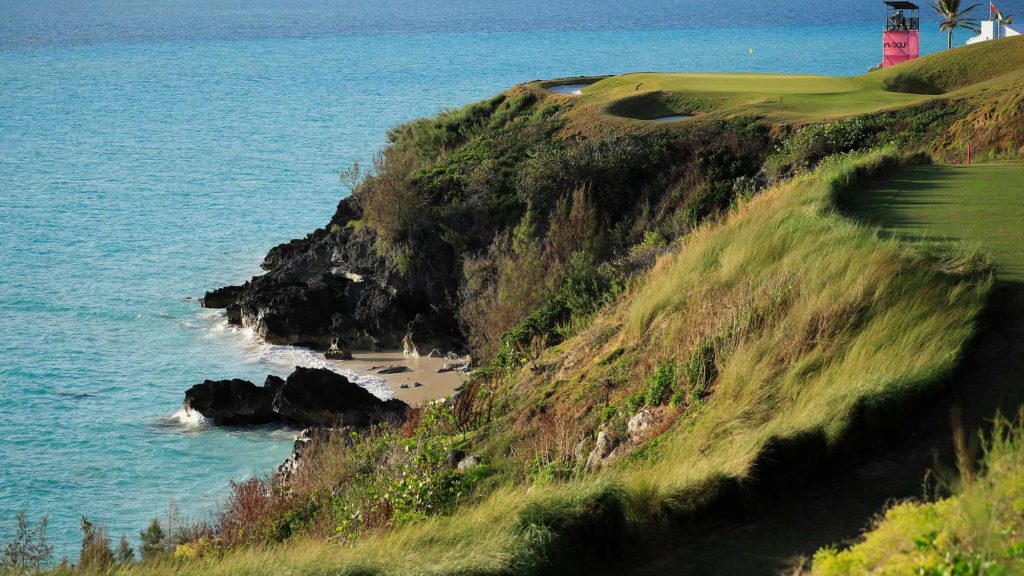
Hole 16: Port Royal Golf Course, Southampton, Bermuda
Bermuda Championship
Par 3 • 235 yards / 215 metres
Though one of Bermuda’s most famous holes, golf viewers might be unfamiliar with Port Royal’s 16th (the event has been held only twice). If the tour continues to return to Bermuda, however, the 16th might eventually take residence among golf’s most recognised holes. Designed in 1970 by Robert Trent Jones, it clings precariously to the south-western edge of the island, perched above the rocky Atlantic shore. The par 3 asks pros to hit long irons through buffeting winds to a green 40 metres deep but just 15 paces across, with errors drifting off into one of several deep bunkers, the rough or the sea. Barely one in four tee shots found the putting surface in 2020, making it the sixth-most difficult hole on tour – and the only one in the top nine not from Winged Foot.

Hole 9: Monterey Peninsula C.C. (Shore course), pebble beach
AT&T Pebble Beach Pro-Am
Par 3 • 223 yards / 204 metres
The pros play one round here in the three-course AT&T rotation, and players must be happy they don’t have to face the Shore’s ninth hole more than that. (The pro-am portion was cancelled in 2021, and the pros played only Spyglass and Pebble.) Oriented just 50 steps from the rocky beach and 17 Mile Drive, it’s one of the most perplexing par 3s on tour, with an exposed green slithering across a visually arresting landscape of dunes, rock and cypress. The topsy-turvy contours are almost supernaturally resistant to hole-outs – the average putts-per-green is 2.0 (including 2.12 in 2020), the fourth-highest average among tour courses. The Shore features a breathtaking collection of par 3s, but it’s the strange mojo of the ninth that lands it on this list.

Hole 17: Austin Country Club, Texas
World Golf Championships–Dell Technologies Match Play
Par 3 • 150 yards / 137 metres
It’s rare to find a short par 3 on the PGA Tour that can defend low scores without resorting to extreme measures. The tees at Austin Country Club’s 17th are set at just 114 to 137 metres – wedges for most – yet the one-shotter, benched into a steep, rocky hillside above a wooded ravine, has persevered with a 2.93 stroke average since the matchplay event moved there in 2016. Like the 12th at Augusta National, the green is deceptively hard to hit because the swirling winds aren’t detected until balls are hoisted into the sky. Fear of the hazard short also produces common misses over the putting surface. Aiming at flags cut on the small, precarious left side of the green is often the sucker play or a hero’s match-clinching shot.
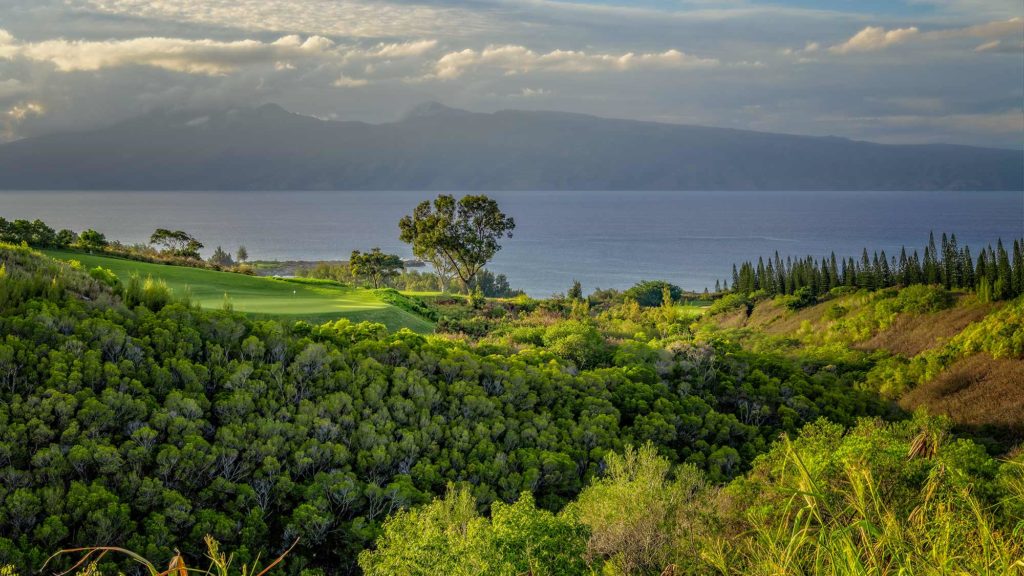
Hole 6: Kapalua (Plantation Course), Maui, Hawaii
Sentry Tournament of Champions
Par 4 • 424 yards / 388 metres
The Plantation course’s sixth hole begins at one of the property’s highest points and plays over a fairway crest before dropping some 20 metres towards a green that kicks hard left to right. For years the hole played about 360 metres, and nearly every player hit driver over the crest, leaving just a short pitch from below the tilted green. When the tour began using the 390-metres tees for three out of four rounds in 2019, the sixth became not just longer but more interesting. Players now have to read the Maui trade winds and contemplate whether they can get tee shots down the hill. Though some continue to gun driver, most choose to lay back near a previously obsolete fairway bunker leaving a longer approach that requires more control. The sixth has become a much more dynamic hole, producing an almost equal number of birdies and bogeys (39 to 41).
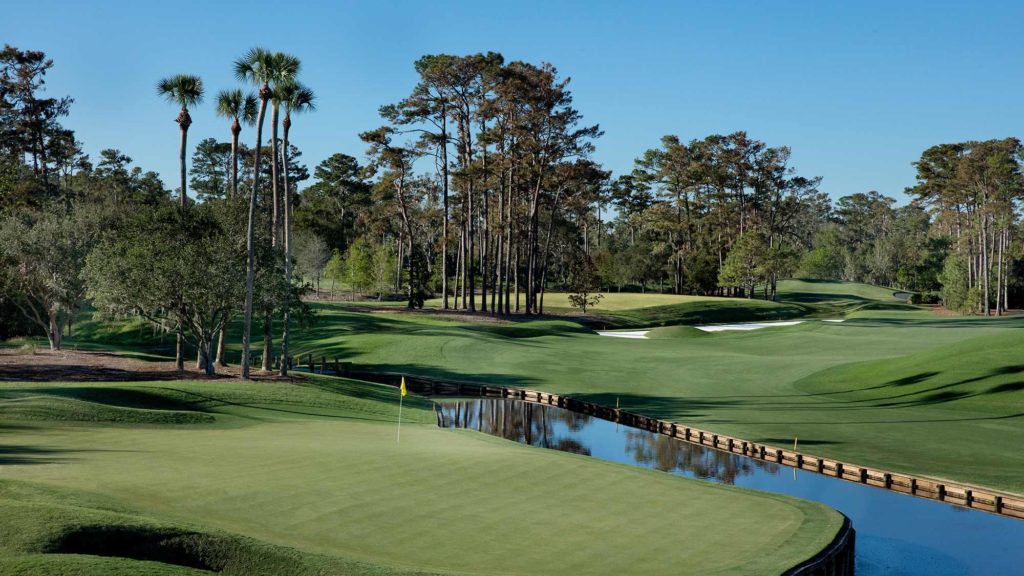
Hole 4: TPC Sawgrass (Stadium Course), Ponte Vedra Beach, Florida
Players Championship
Par 4 • 384 yards / 351 metres
Pete Dye holes are choreographed to put stress on the player, especially at TPC Sawgrass, a course built for the professional game. Few holes do it better than the fourth, a short par 4 where 2s and 3s can be had if pros can spin their short irons and wedges, stopping balls on the upper back-right shelf or using the green’s internal slopes to feed the ball close to left and left-front pins. However, playing with less control from the spectator moguls on the left or the rough and bunker on the right brings into play the canal short of the green or the pot bunkers beyond it. Knowing the importance of playing from the fairway magnifies the pressure of an otherwise simple drive. TPC Sawgrass’ fourth emphasises that sometimes the most serious hazards exist inside the players’ heads, just as Dye wanted – because we all hate wasting opportunities.

Hole 4: Riviera Country Club, Pacific Palisades, California
Genesis Invitational
Par 3 • 236 yards / 216 metres
The Redan is one of the most versatile par-3 concepts. Unlike Waialae’s Redan 17th perched formally atop
a flat beachfront, George Thomas’ version at Riviera is a majestic beast pouring like a glacial deposit off a canyon wall on the right. The green is set directly beyond a yawning bunker, and the land suggests that shots should kick hard left onto the putting surface. This doesn’t typically happen in February when Riviera’s kikuyu grass is spongy, which helps explain why the fourth has played as the tour’s most-difficult-to-hit par 3 (only 33 percent
make it in regulation) since 2016. It seems like a fruitful way to make a birdie or par at the fourth is to hole out from off the green – something that has happened 40 times in the past five years, also the most on tour.
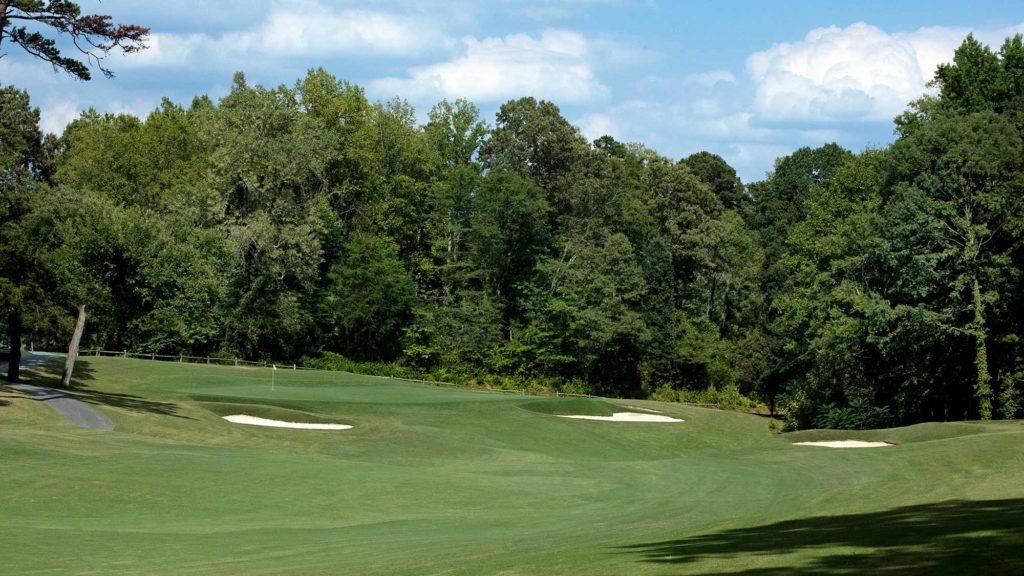
Hole 5: Sedgefield Country Club, North Carolina
Wyndham Championship
Par 5 • 529 yards / 484 metres
The fifth at Sedgefield, a wonderful Donald Ross course, is one of the most accessible par 5s on the PGA Tour. If almost no one tries to hit the 10th at TPC Deere Run in two shots, nearly the entire field takes a rip at Sedgefield’s fifth, with more than 80 percent of pros going for it. Why not? With just a few shallow greenside bunkers and an unguarded fairway, there’s little reason not to. But we love the fifth because holes that reward aggression over prudence have a place in golf, and those who try for the green have gone a combined 270-under par since 2015, and those who lay up are 11-over par. Despite the ease of getting on or near the green in two, players often face 60-foot eagle putts with mystifying break, which is why we have seen 141 three-putts in the past five years, the most of any hole on tour.

Hole 7: TPC Twin Cities, Blaine, Minnesota
3M Open
Par 4 • 381 yards / 348 metres
In 2019, the first year of the 3M Open, most of the field played the seventh hole at TPC Twin Cities the same way: hitting their drives to a common area near a cross bunker, leaving a short wedge to the green. Before 2020, Brandon Johnson, senior architect and vice-president at Arnold Palmer Design Company (the course’s original architects), added a carry bunker on the left in line with the green and pulled in two right-side bunkers, creating different landing areas by altering the angle of the fairway. Players now have a tougher decision, placing drives across a graduated, 70-metre-wide spectrum, the zones tightening the farther they choose to advance it. Shot-dispersion patterns have widened, and so has the range of scores (rising from a 3.8 stroke average to 4.0), proving how smart architectural tweaks can broaden a hole’s strategic elasticity.

Hole 10: TPC Deere Run, Silvis, Illinois
John Deere Classic
Par 5 • 596 yards / 545 metres
Great strategic holes are puzzling. They force you to consider different approaches and to take honest measure of your confidence and skills. In this sense, the 10th at TPC Deere Run is anti-strategic because it takes most decision-making out of the equation. The length of the hole and a water feature guarding the front-right of the green, which extends into the fairway, makes hitting it in two appear impossible for all but the meager 8 percent of the players who try it (it’s the lowest go-for-the-green percentage of any regular tour hole). If the way to challenge tour players is to create doubt and indecision, this hole seems to play into their hands. But it’s also an extreme irritant, demanding they check their egos and do something not in their DNA – lay up. That makes it distinctive.

Hole 17: Waialae Country Club, honolulu
Sony Open in Hawaii
Par 3 • 194 yards / 177 metres
The Redan describes a green that angles away from the tee, usually set over a bunker, and falls from front to back. When maintained correctly the putting surface requires a shot played short, so it can hit and release onto the green. The 17th at Waialae, which runs flush along Waialae Beach with its deep, thin green sandwiched between bunkers, can be frustrating to pros accustomed to sticking their approaches where they land. Here, the fall-away slope and raised right edge of the green tend to shuttle balls away from the preferred targets, often off the back of the putting surface, creating irritating up-and-down scenarios. Always a hard par, the hole becomes especially mental when the normal trade winds blow from behind – sometimes up to 30 miles per hour as it did in 2020 – causing even more shots to bound past the green.

